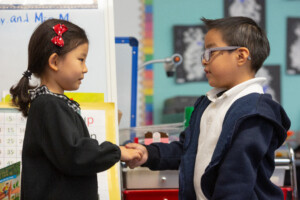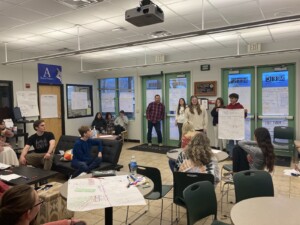What is Culturally Responsive CTE?
Key Points
-
Culturally responsive pedagogy refers to teaching methods and practices that incorporate students’ cultural identities and lived experiences.
-
It is a more proactive approach is to encourage students to embrace other cultures as a way to be better humans, scholars, and future industry leaders.

By: Peter Harris
What does it mean to be “culturally responsive” in a rural Pathways in Technology Early College High School (P-TECH)?
“Culturally responsive pedagogy” refers to teaching methods and practices that incorporate students’ cultural identities and lived experiences into the classroom as tools for effective instruction. That is a fine and even noble idea as far as it goes, but anything “responsive” is inherently reactionary. A more proactive approach is to encourage students to embrace other cultures as a way to be better humans, scholars, and future industry leaders.
This approach is necessary at Ulster BOCES in part because we have a relatively homogenous student body, with 67% of our students identifying as white. Nationally; however, there is much more parity among white, Black, and Hispanic students enrolled in career and technical education (CTE) courses. According to the national Center for Education Statistics, Black and white students take at least one CTE class at the same rate (82%), and Hispanic students are only slightly less likely to enroll in a CTE course (72%).
While CTE and work-based learning programs nationally are quite diverse, there are many pockets of the country—including Ulster—that remain heavily white. When we think of “culturally responsive pedagogy” as it applies to CTE, the focus tends to be on the demographics of the student body as it exists within the classroom. Ulster is rethinking this paradigm, and instead, applying a proactive culturally responsive pedagogy to prepare our students for the world they will encounter once they leave our school—and all the complex, global dynamics that entails.
A Global Competence Approach
There are 3.9 billion workers in the world, but only 164 million of them are American workers. Considering the fact that the United States dominates international markets, it is no longer a question of whether an American worker will interact with someone of a different social identity, but when it will happen. This is becoming increasingly true even in rural communities like ours.
Because we know that to thrive in today’s workforce, our students need to be able to engage with people who may look different from them—some of whom come from completely different backgrounds—we apply a global competence approach to our work-based learning opportunities. Along with learning to investigate the world, our goal is for students to learn to investigate the business partner, the product, and the challenge that’s before them, all within the context of industry partnerships in their community.
While CTE and work-based learning programs nationally are quite diverse, there are many pockets of the country—including Ulster—that remain heavily white.
Peter Harris
This helps them learn to recognize the perspectives of others, not in a theoretical way, but in a very concrete way that is immediately applicable. Whether they’re investigating the market impact of a world event in foreign lands or trying to understand the experiences of an end user in their local community or the decisions of a bottom-line-focused manager, work-based learning teaches our students to adopt another perspective and communicate it to those around them.
Creating Global Citizens
This commitment to training students to succeed in a diverse world is reflected in the learning threads students in our Hudson Valley Pathways Academy are expected to master. Standards laid out in our learning threads require students to:
- Initiate investigations of the world by framing questions, analyzing and synthesizing relevant evidence, and drawing reasonable conclusions about global issues;
- Recognize, articulate, and apply an understanding of different perspectives (including his/her own).
- Interact effectively with others. Actively listen and take initiative. Show respect for the opinions and contributions of others;
- Select and apply appropriate tools and strategies to communicate and collaborate effectively to multiple audiences using a variety of media and formats;
- Develop cultural understanding and global awareness by engaging with learners of other cultures;
- Translate his/her ideas, concerns, and findings into appropriate and responsible individual or collaborative actions to improve conditions by acting individually or collaboratively to execute a plan that is culturally responsive, and strongly likely to improve a local, regional, and/or global situation; and
- Reflect on the effectiveness and cultural appropriateness of your own actions.
A project our students recently worked on highlights how this all comes together. A local company we partner with was experiencing supply-chain issues and trying to figure out what they needed to tell their various constituencies about the issue and how to communicate that information. They asked our students to find the answer.
Those students had to do a great deal of research to understand the product itself, the supply-chain issues, and the various stakeholder audiences, such as the company’s investors, product users, and the vendors who supply the company. They had to understand what the company was capable of in terms of filling orders, fielding requests from new and existing users, and more.
It was an amazing project because these students had to understand elements of geopolitics, organizational structure, and the perspectives of various stakeholder groups to begin proposing ideas. It required a whole other level of knowledge than students generally get in a traditional school setting.
It was a model of how any district, no matter its demographics or location, can put student voice and choice at the forefront of its approach to pedagogy to empower young scholars in an environment that celebrates and values each individual.
Peter Harris is the director of learning and design for the career pathways programs at Ulster BOCES. He can be reached at [email protected].






0 Comments
Leave a Comment
Your email address will not be published. All fields are required.